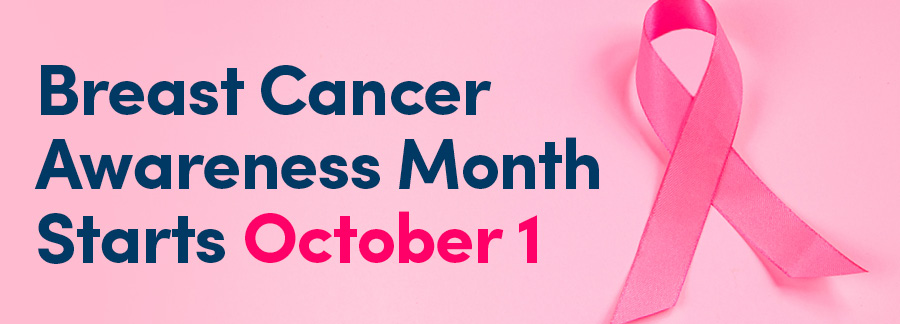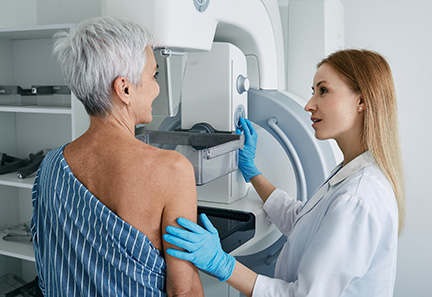

Awareness about breast cancer is critical to both prevention and early detection. Screening women between the ages of 50–74 can help identify the disease when it is most treatable.
The average risk of a woman in the U.S. developing invasive breast cancer sometime in her life is about 13%, or a 1 in 8 chance. The chance that a woman will die from breast cancer is about 2.5% or 1 in 39.1
 Mammography is the most effective screening test used today and can detect cancers at an early stage when chances of survival are highest. Mammography has helped reduce breast cancer mortality in the U.S. Three out of four women diagnosed with breast cancer have no family history of the disease and are not considered high risk.2
Mammography is the most effective screening test used today and can detect cancers at an early stage when chances of survival are highest. Mammography has helped reduce breast cancer mortality in the U.S. Three out of four women diagnosed with breast cancer have no family history of the disease and are not considered high risk.2
Women can benefit from the opportunity to express their concerns and fears with their provider regarding the risk of breast cancer. Patients should feel that they can ask questions about breast cancer, their family history, breast screening methods, and their individual risk for breast cancer.
The American Society of Breast Surgeons recommends that all women discuss breast cancer risks with a provider when they are between the ages of 25 and 30. This information can be updated by the provider at the patient’s health appointments prior to the start of mammography screening.3
Every woman should know how her breasts normally look and feel, so she can recognize any changes that may occur. Signs and symptoms of breast cancer may include4:
Providers can address barriers to screening mammography by advocating for convenient screening locations with accessible transportation. For women who may be uninsured or under-insured, there are programs that offer free or low-cost mammography, including those sponsored by the following organizations:



For members, Highmark has resources available that emphasize the importance of preventive health screenings for female patients. You can order free copies of the following materials to share with patients during their visit:
To view these resources, go to Provider Resource Center > EDUCATION/MANUALS > Educational Resources – Member And Provider.
To order, go to the Provider Resource Center > EDUCATION/MANUALS > Inventory Request Form > Select Printable Item. Click the down arrow and then select the items you wish to order. Complete the form and click the ADD TO ORDER button.
For providers, the Preventive Health Guidelines include breast cancer screenings for eligible members. To access the Preventive Health Guidelines, go to the Provider Resource Center > EDUCATION/MANUALS > Preventive Health Guidelines > Adult Ages 19-64 Guidelines OR Adult 65 and Older Guidelines.
Please note that most, although not all, of our customer groups follow the Highmark Preventive Schedule. Verify the member’s eligibility and benefits prior to providing services by using the Eligibility and Benefits function in NaviNet® or Availity® Essentials
or Availity® Essentials or by performing an electronic HIPAA 270 Eligibility/Benefit Inquiry.
or by performing an electronic HIPAA 270 Eligibility/Benefit Inquiry.
References




Highmark does not recommend particular treatments or health care services. This information is not intended to be a substitute for professional medical advice, diagnosis, or treatment. You should determine the appropriate treatment and follow-up with your patient. Coverage of services is subject to the terms of each member’s benefit plan. Additionally, state laws and regulations governing health insurance, health plans and coverage may apply and will vary from state to state.